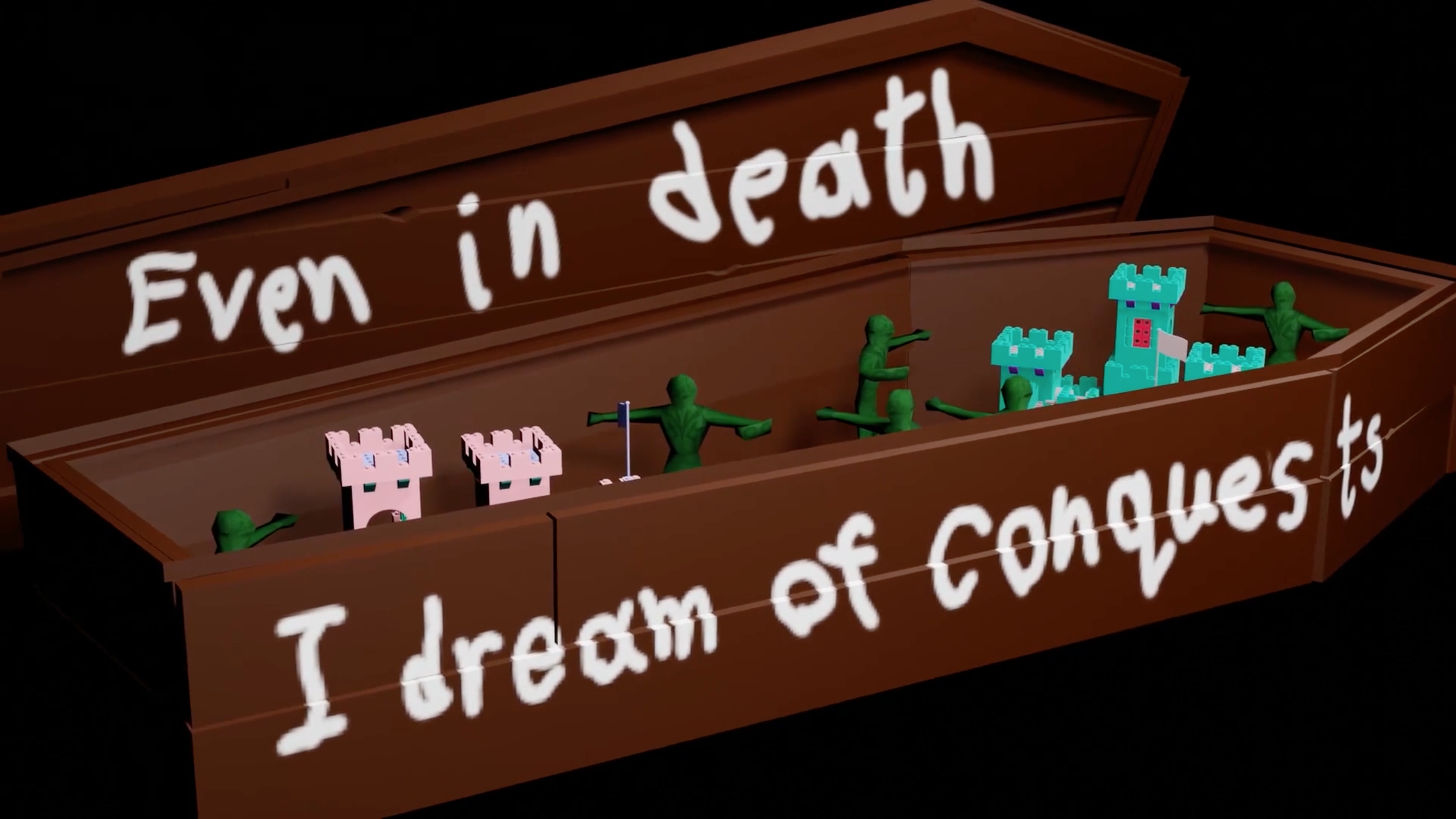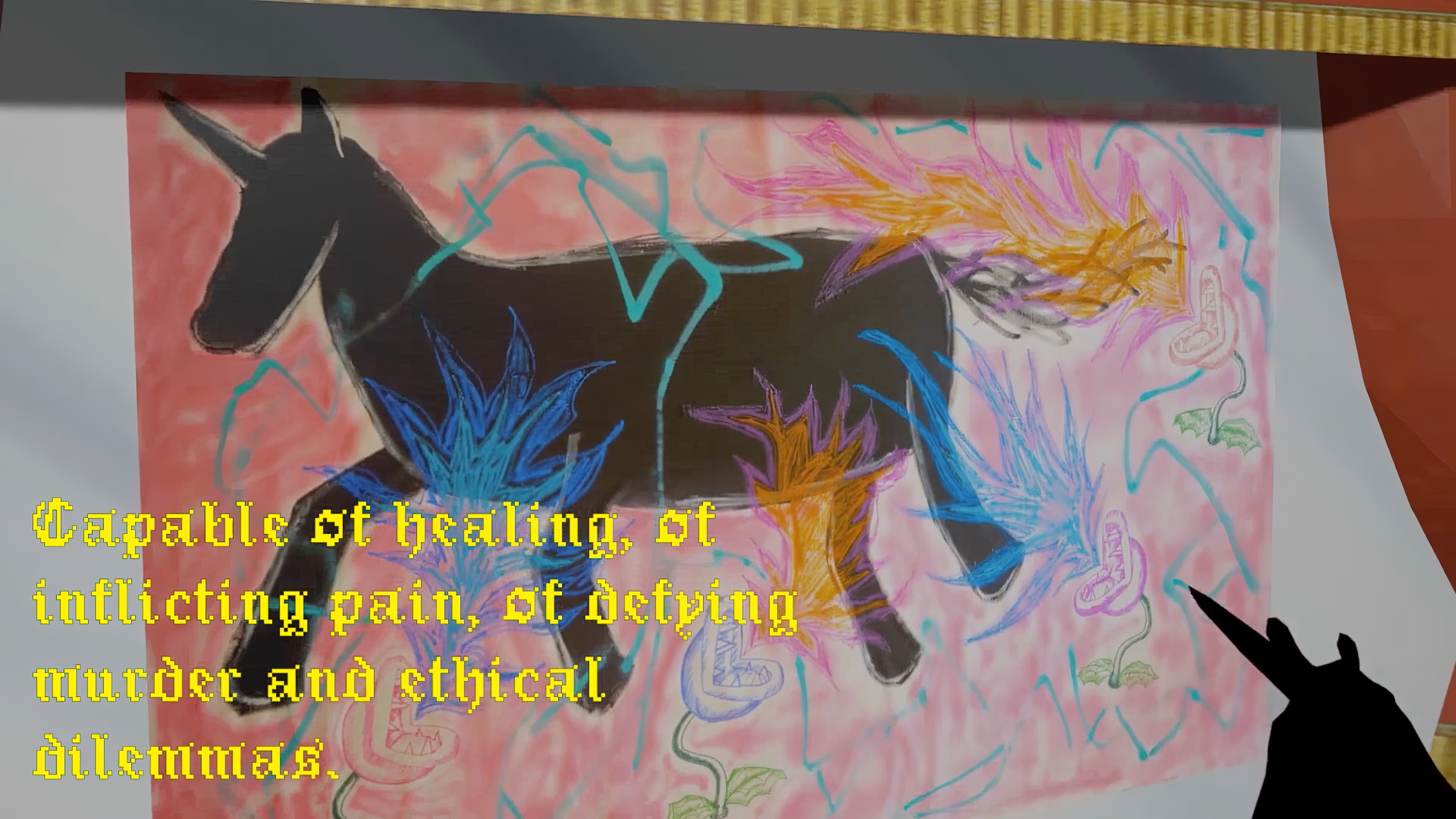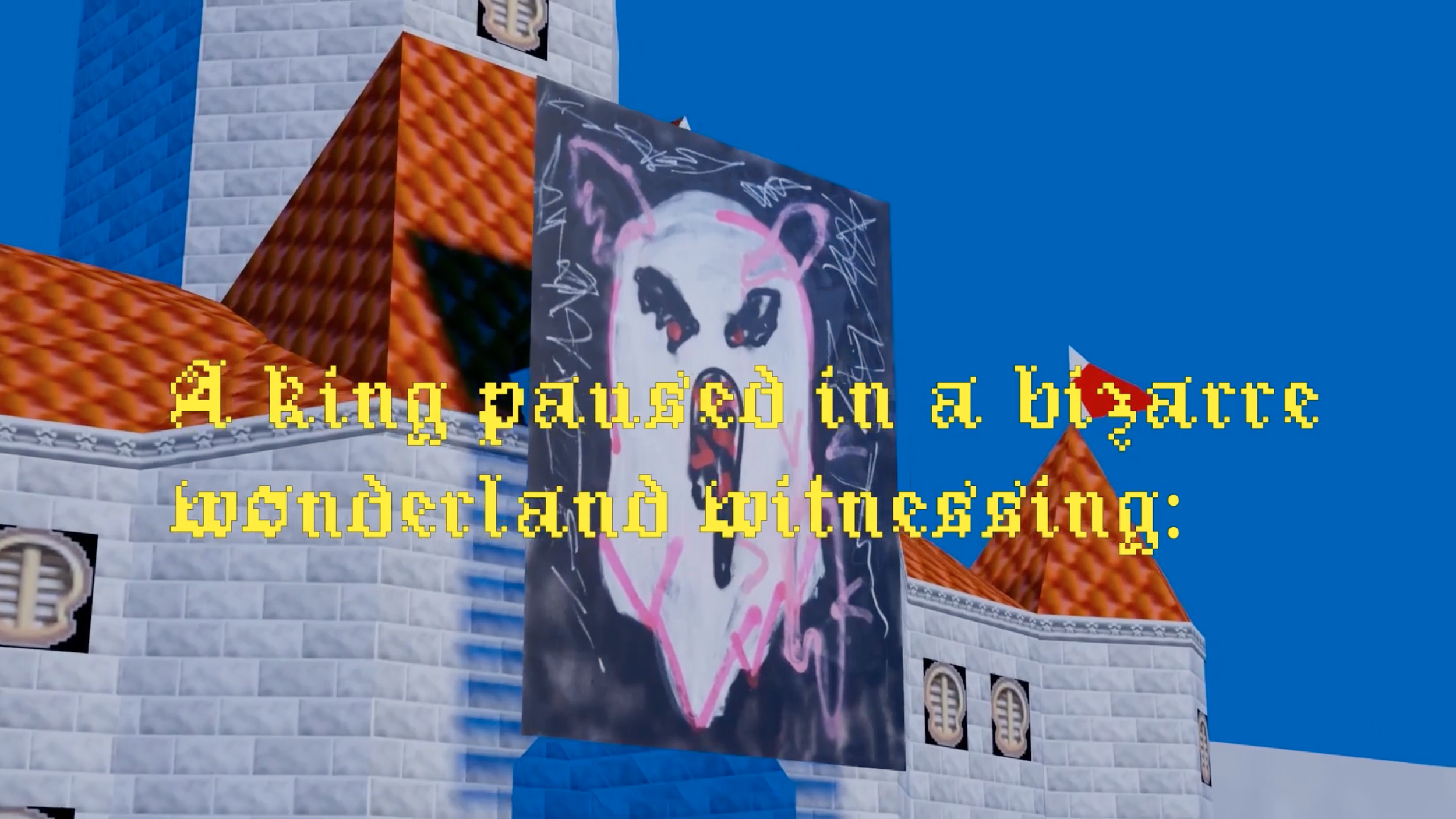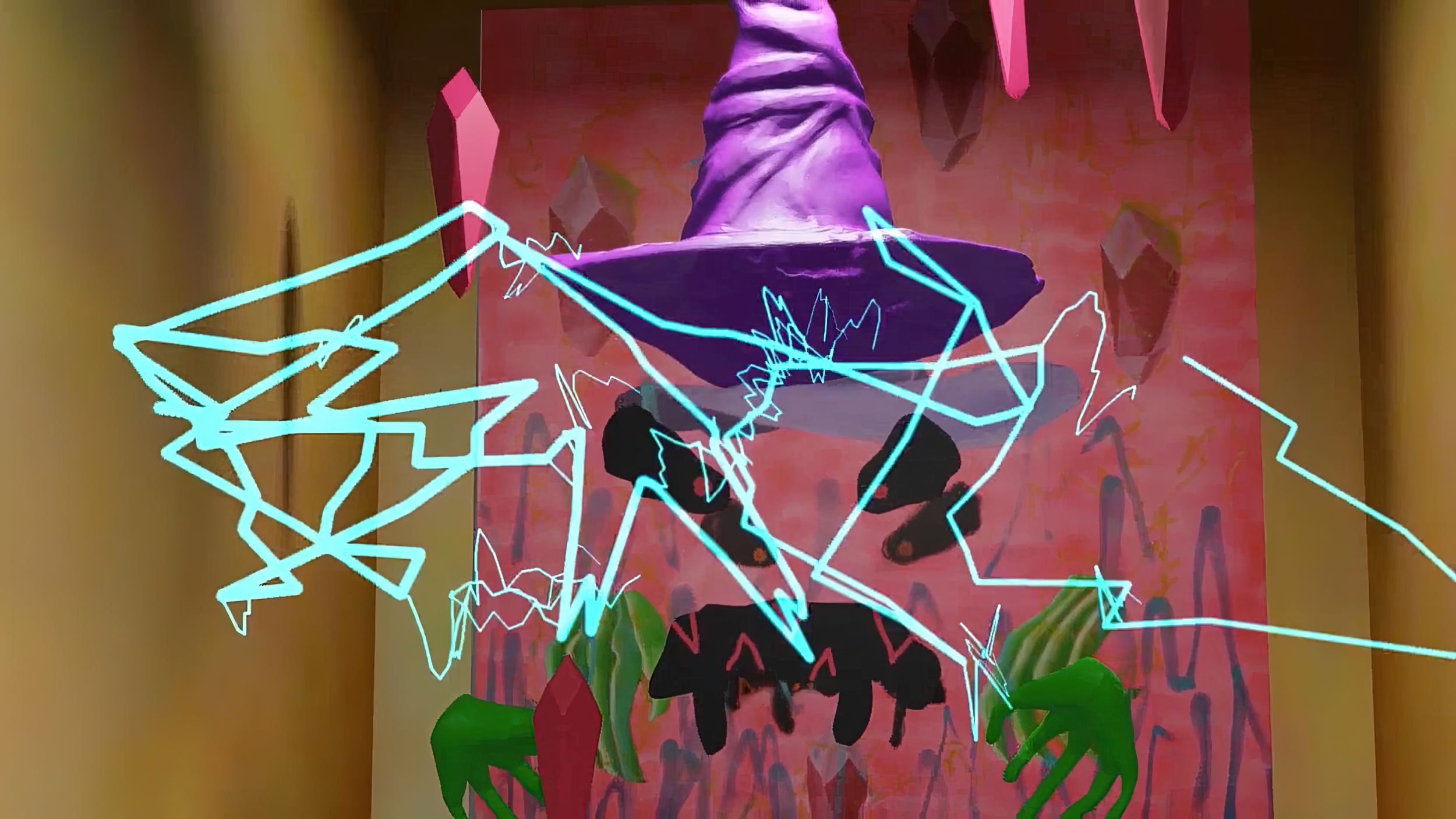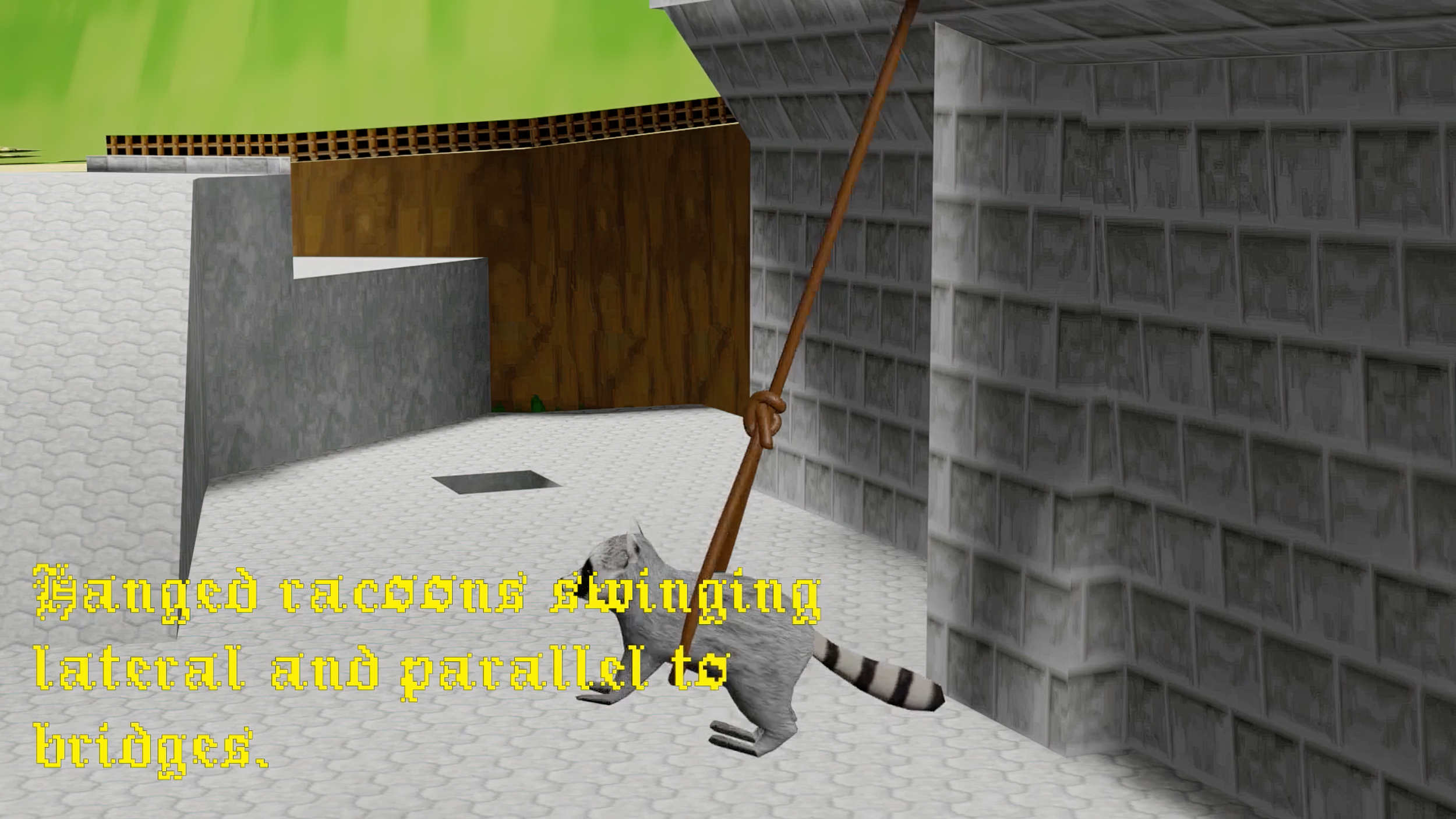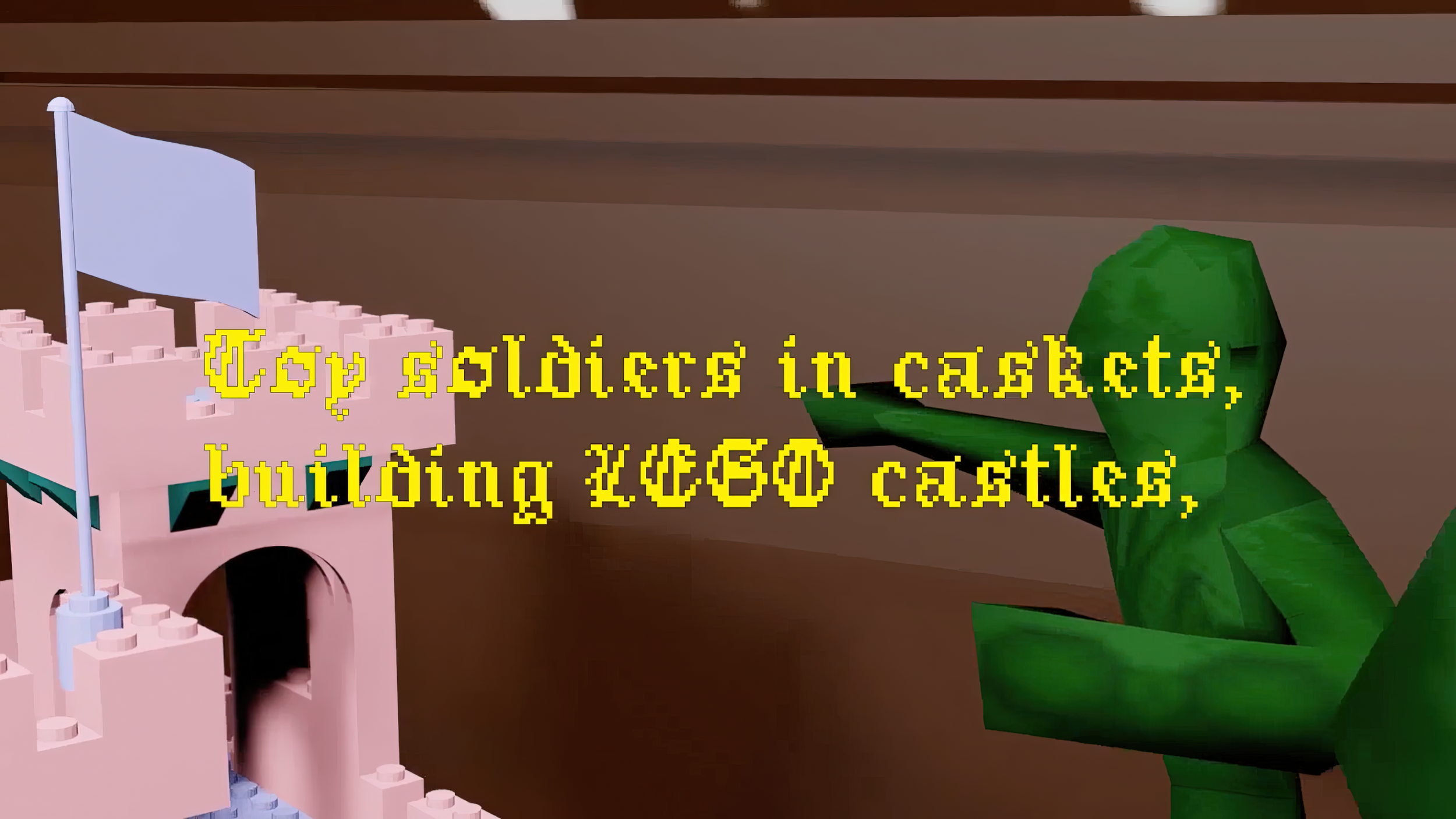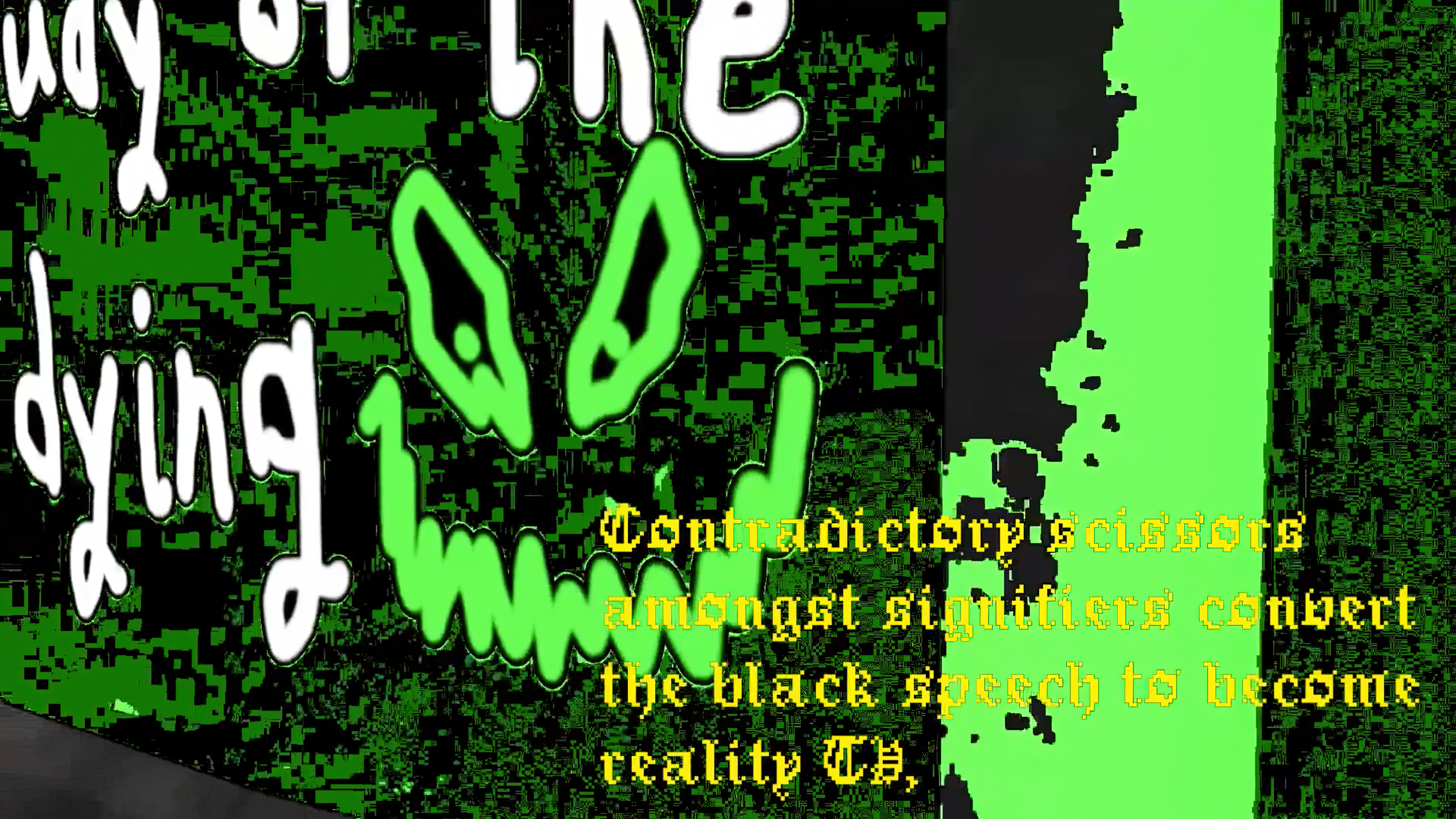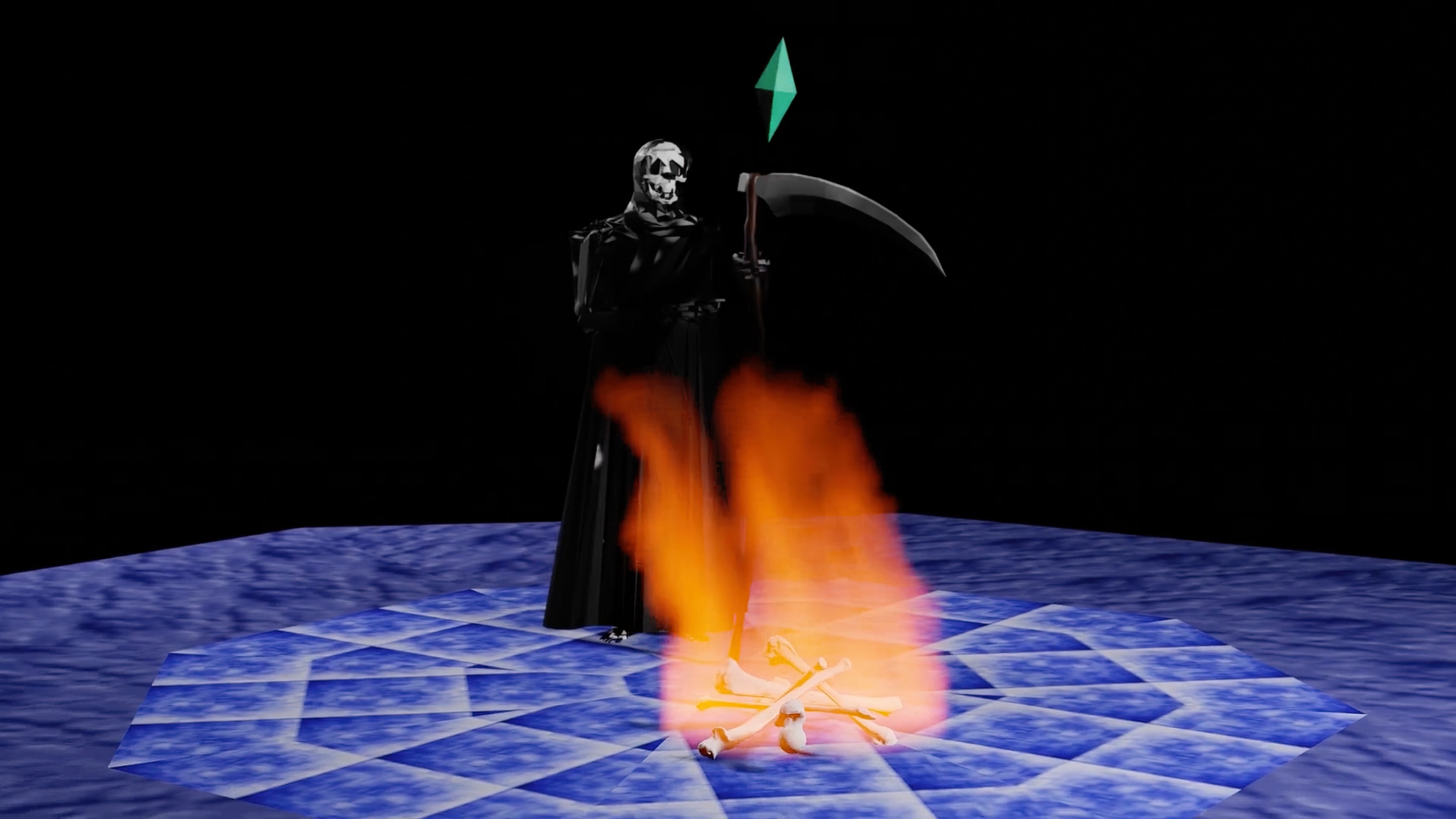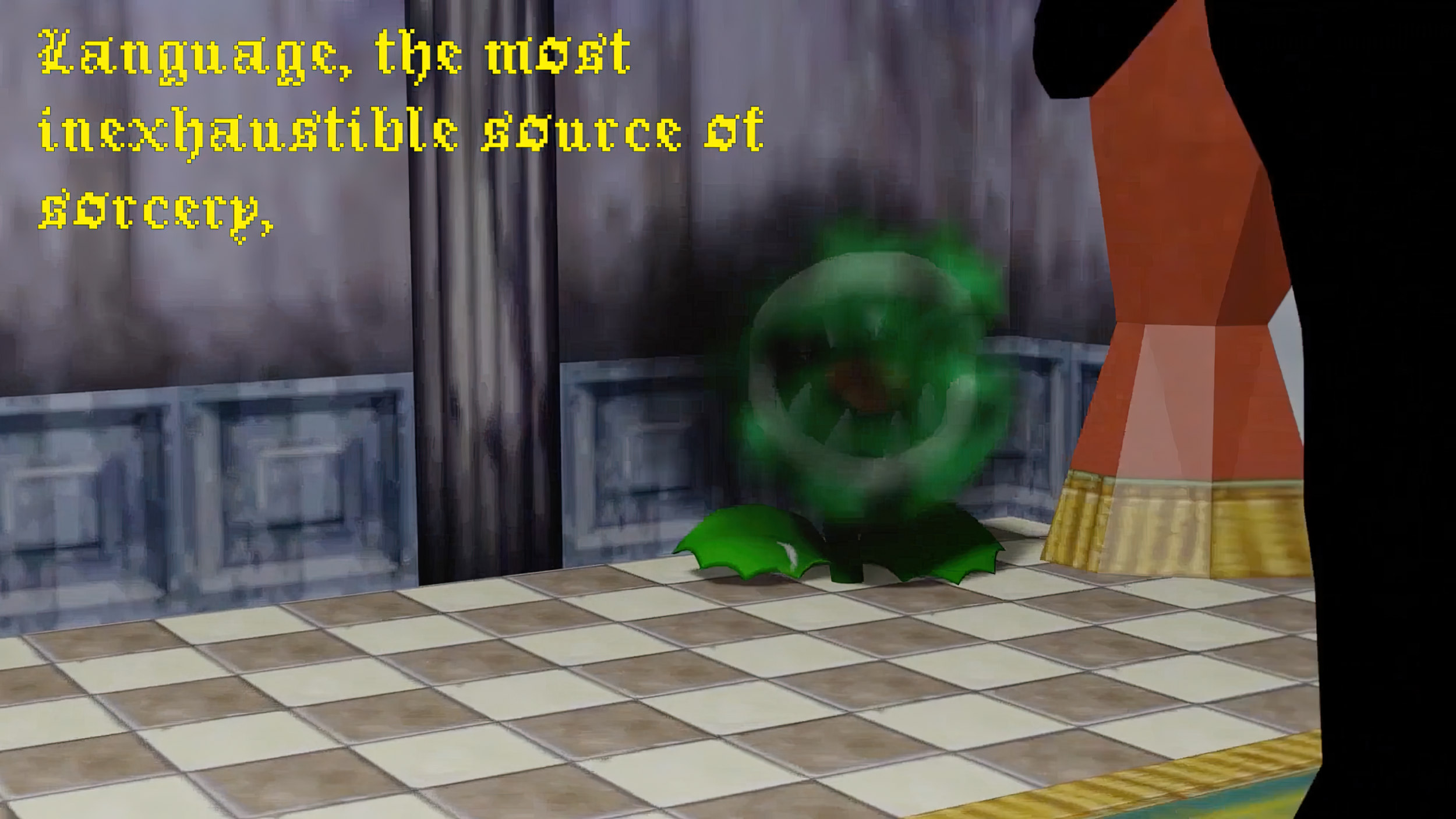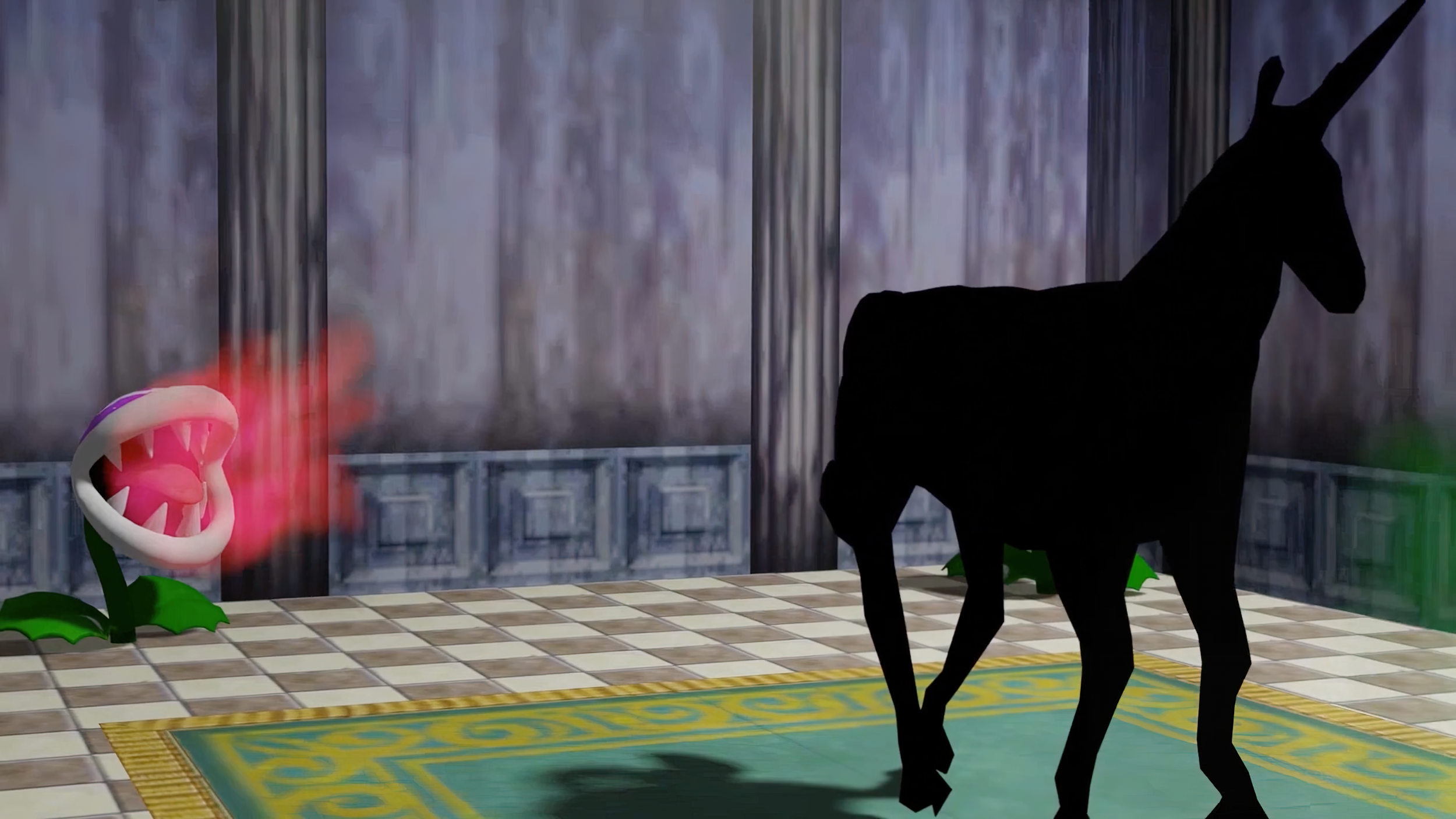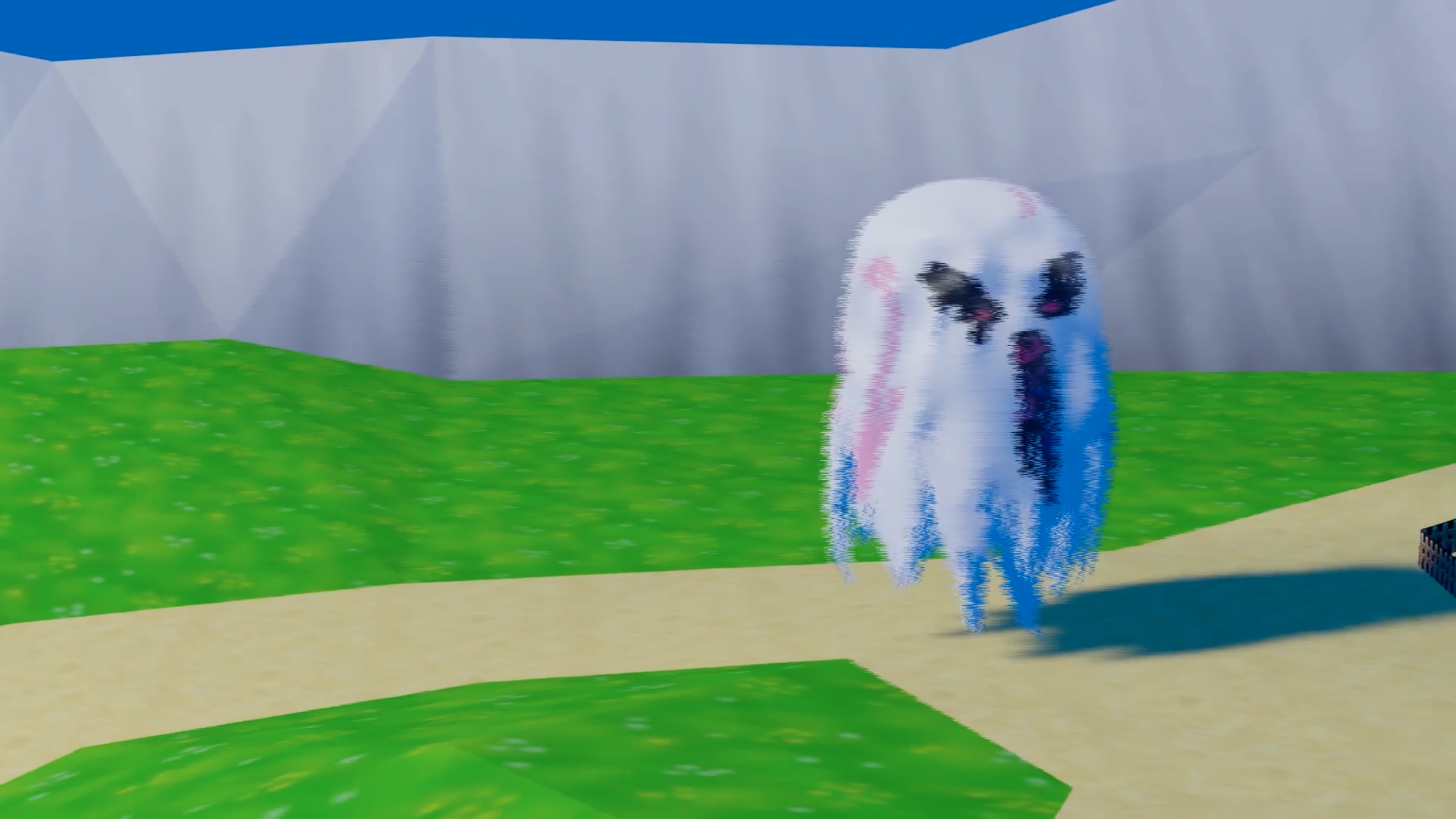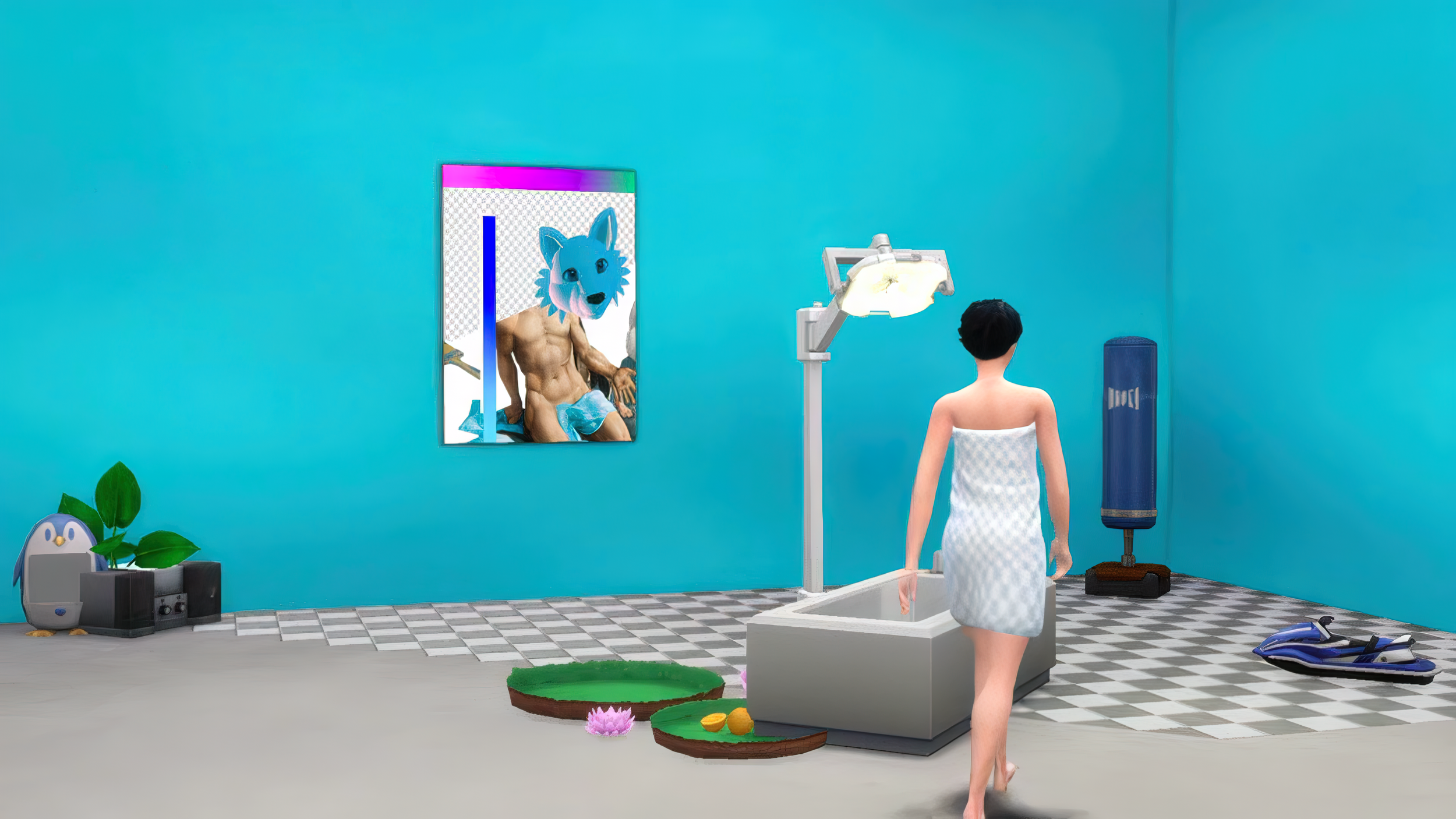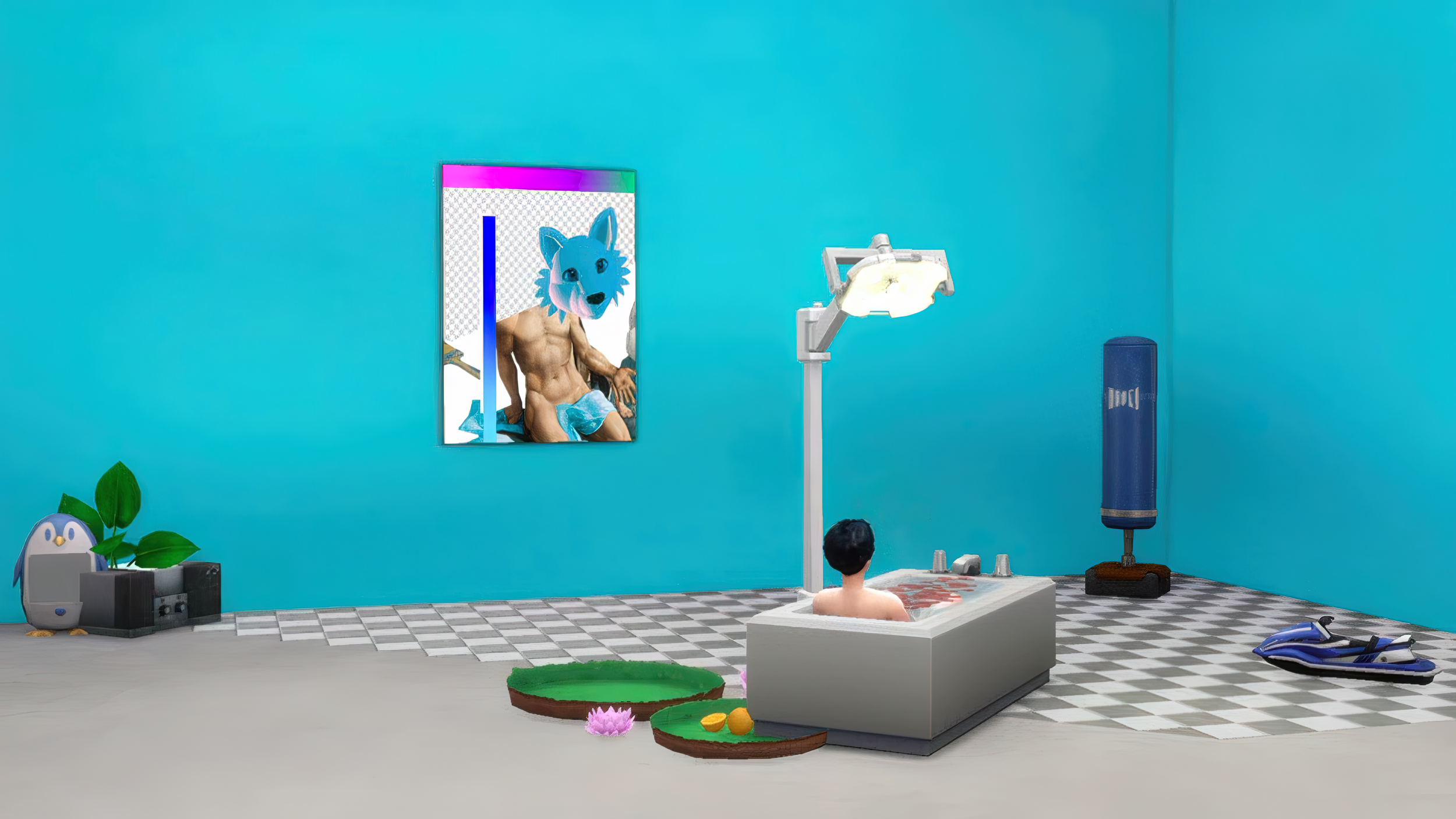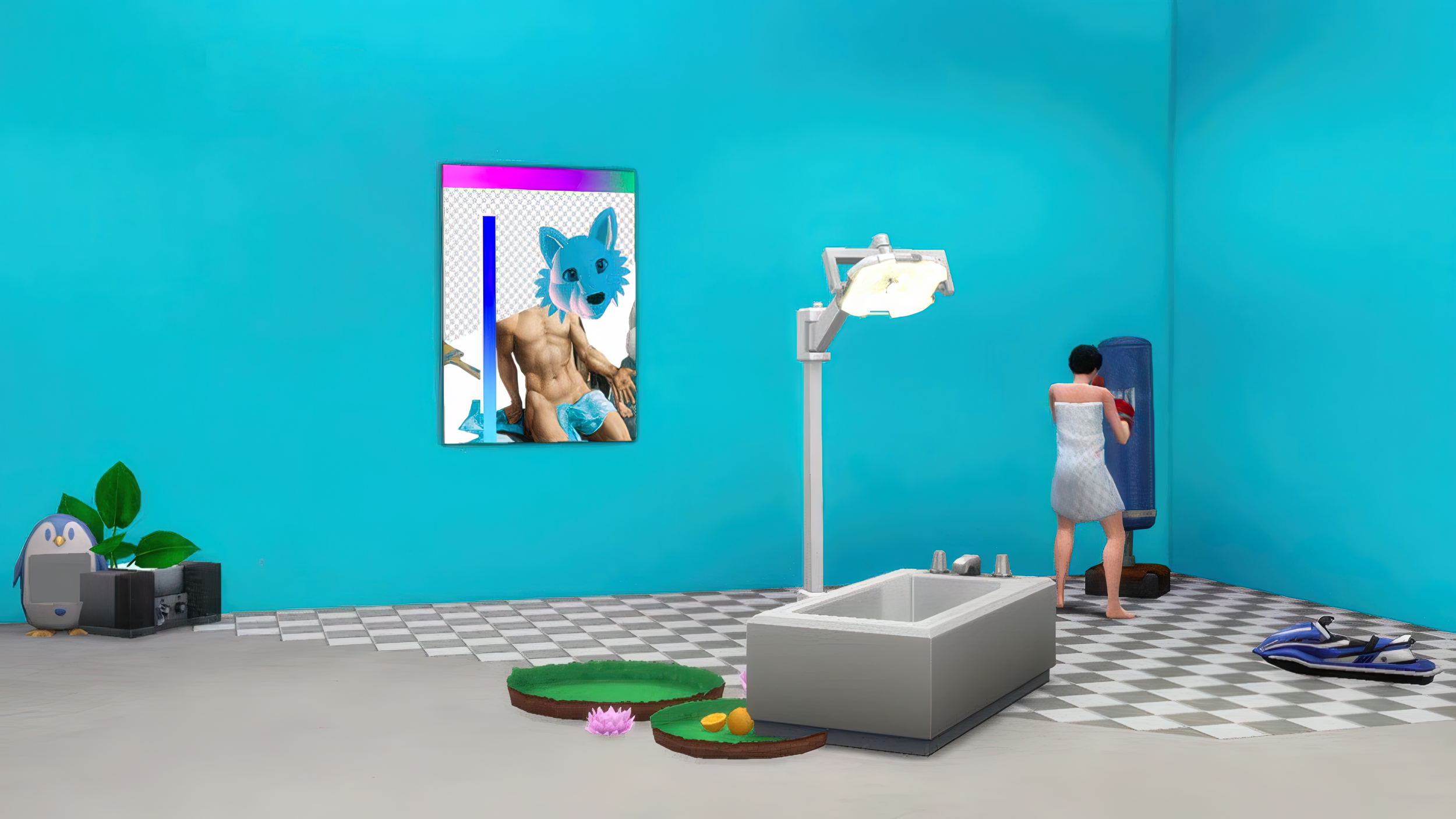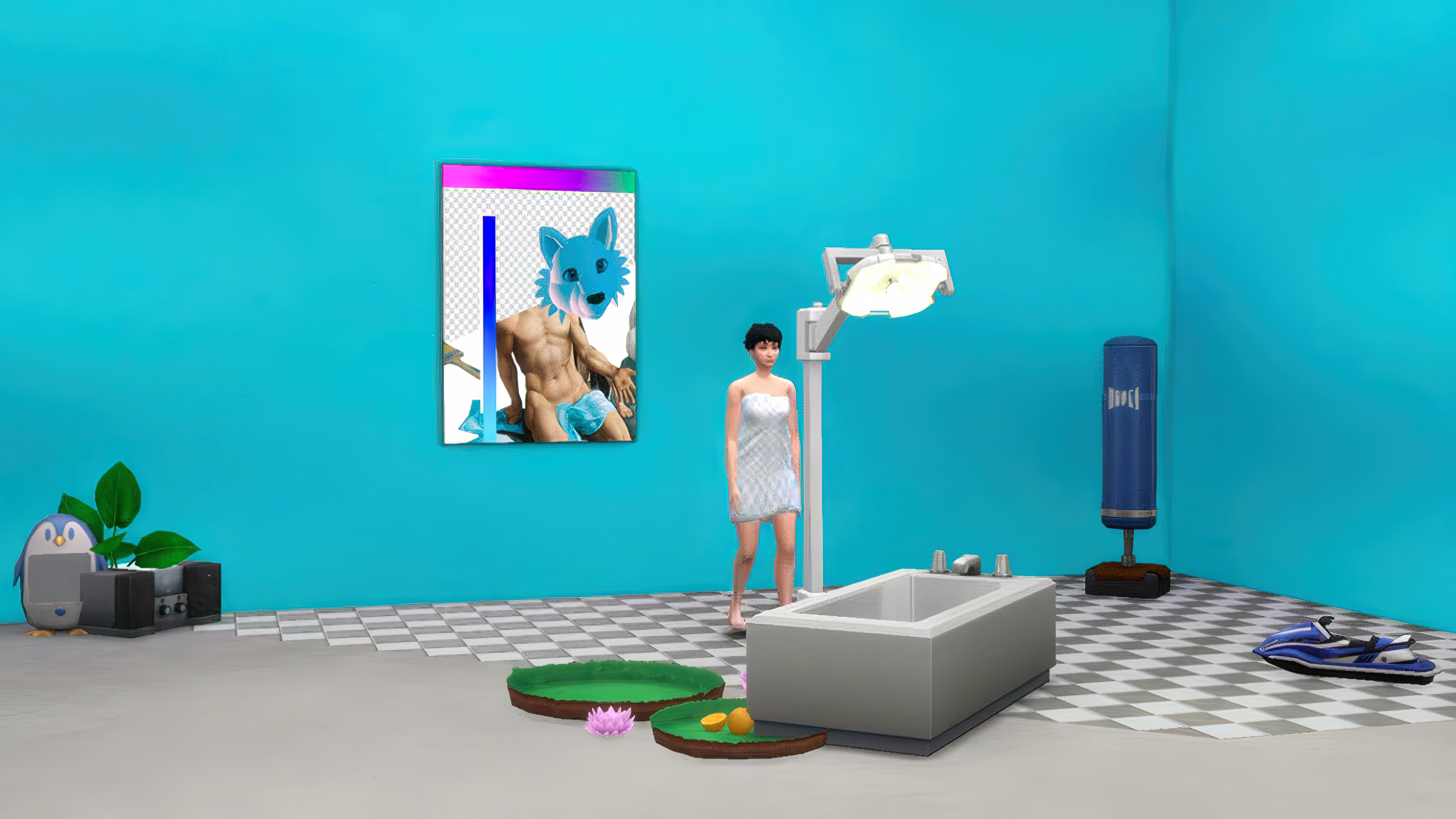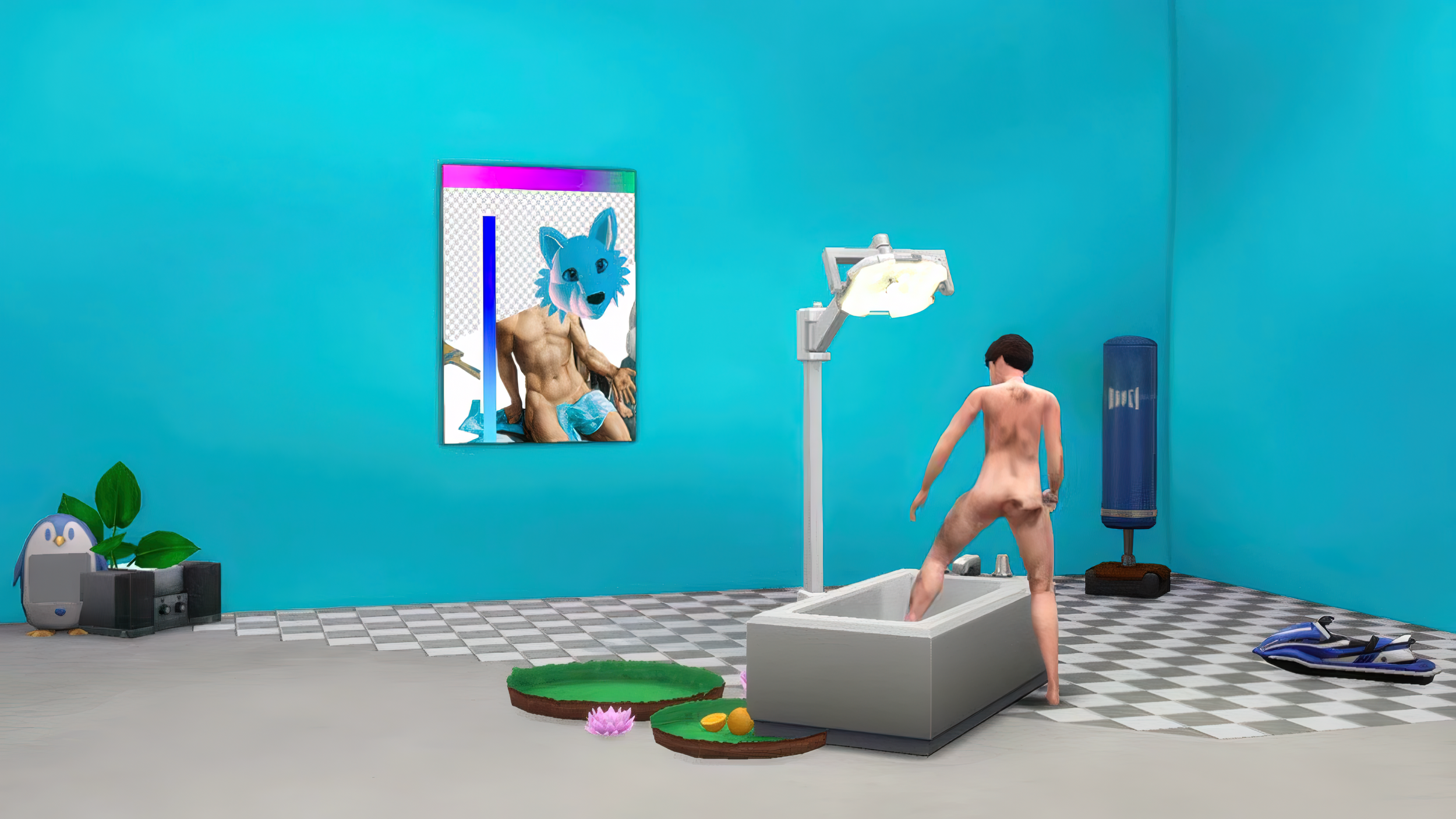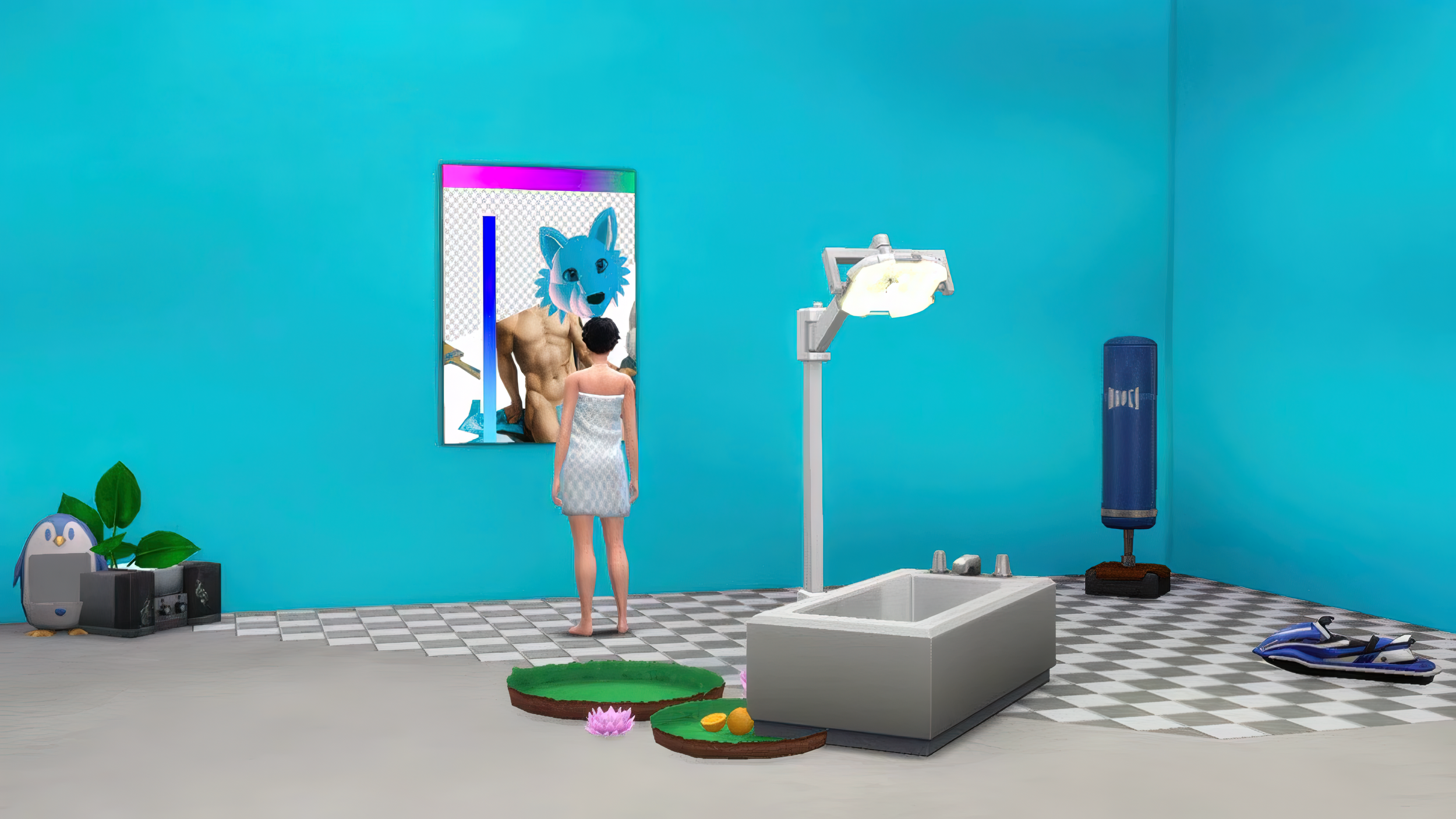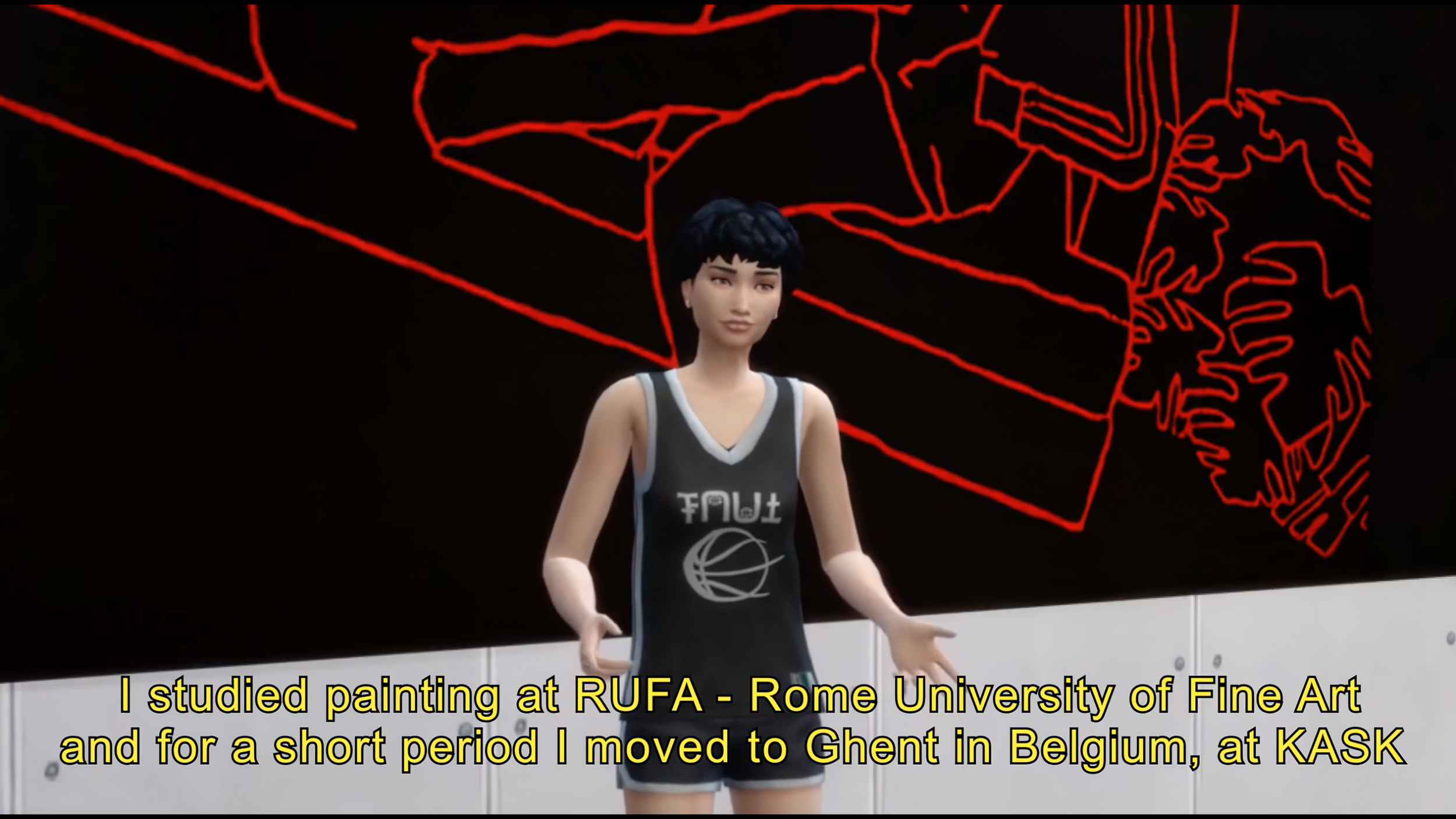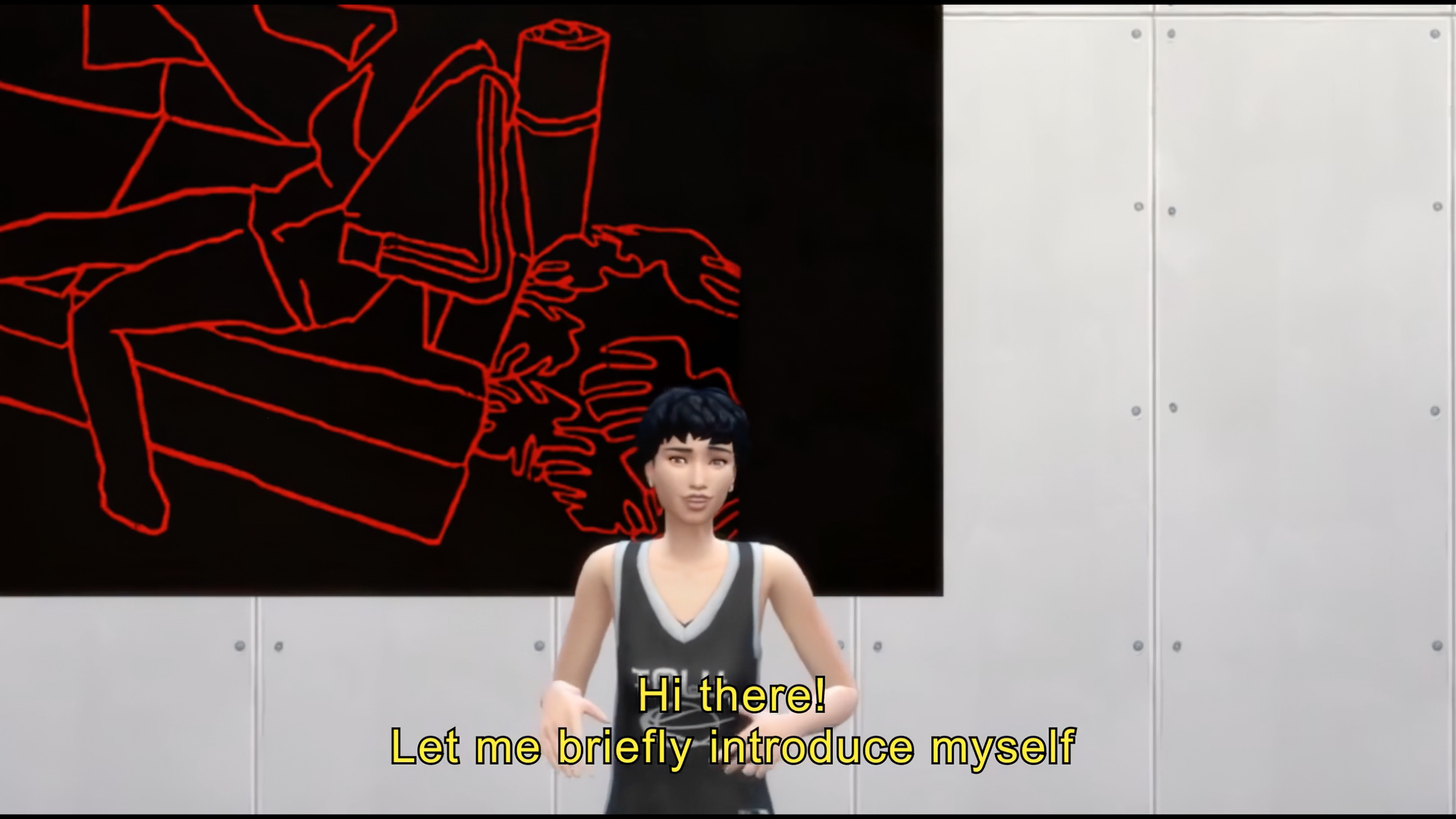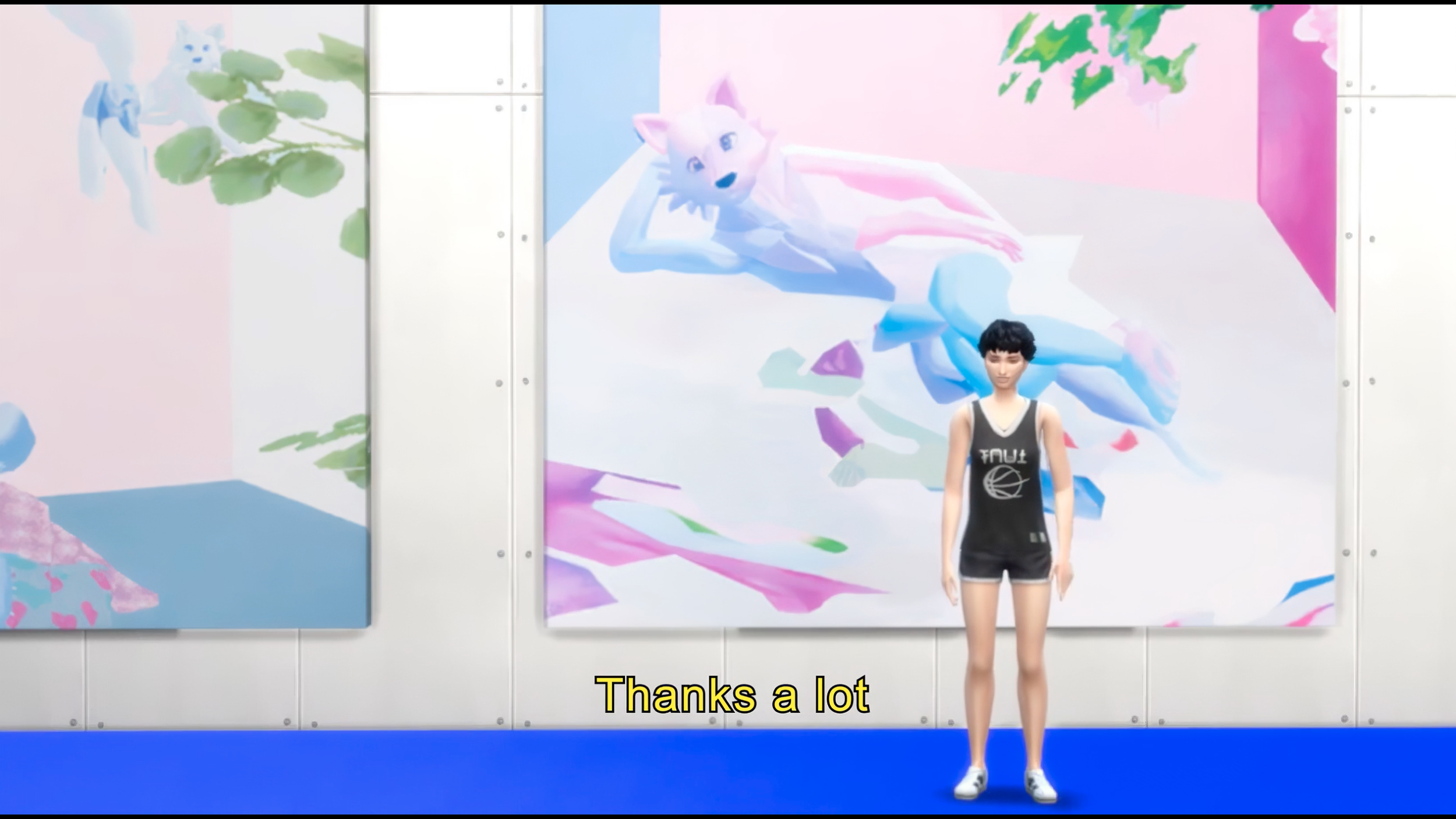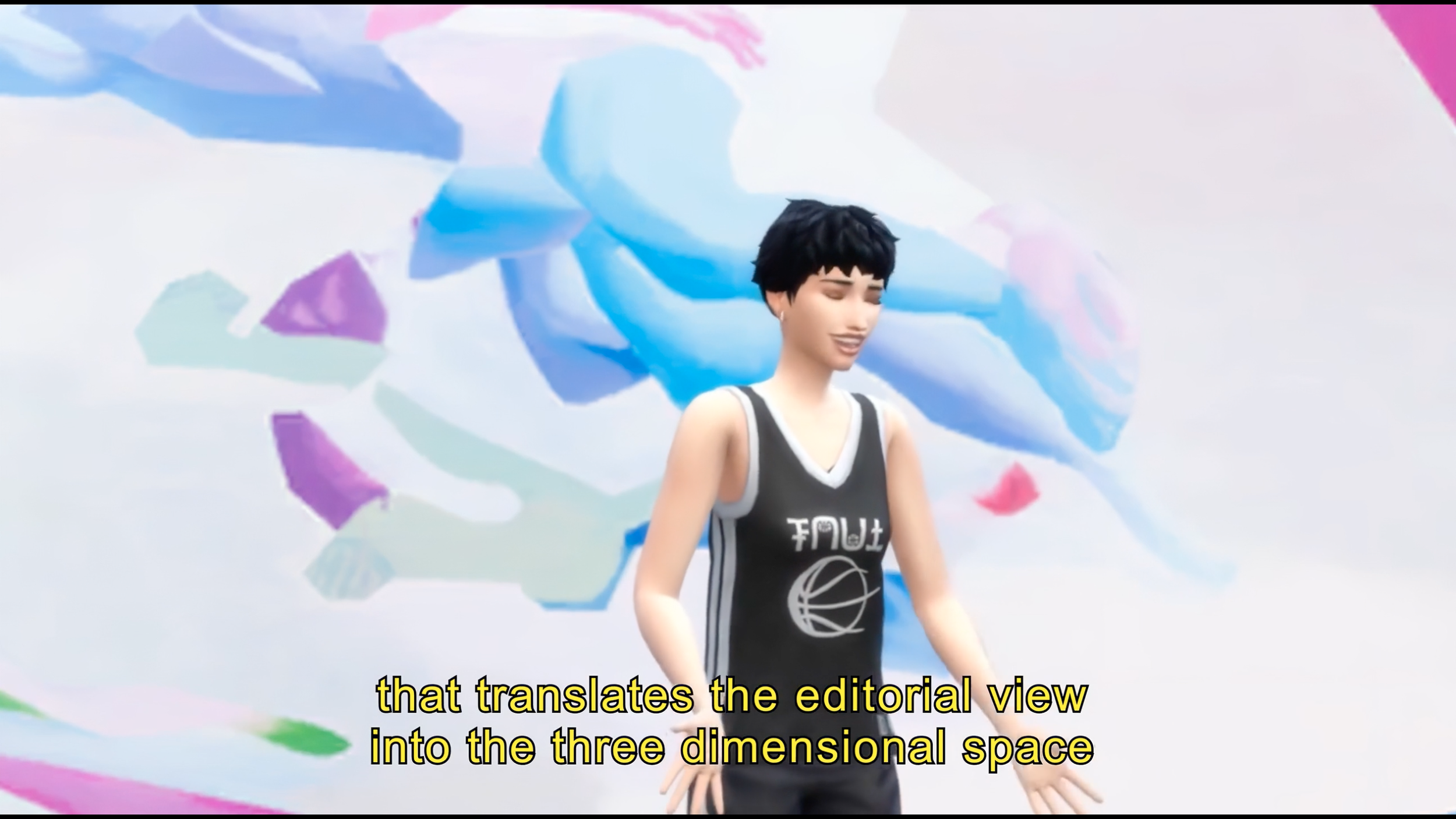VRAL is currently presenting The Death Trilogy by Adonis Archontides, a tryptic of works starring his ersatz Sim-clones. To better appreciate the breadth and scope of this artwork, we are discussing his oeuvre. We continue our exploration with the in-game performance Adonis and Adonis and Adonis and Adonis and Adonis and Adonis and Adonis and Wade and the Effort of Consciousness.
Also known as Adonis x7 and Wade and the Effort of Consciousness, this project can be compared to a Socratic dialogue taking place within The Sims 4, where Adonis had created multiple Sim replicas of himself. This specific setting is a virtual environment operating as, “a microcosm of capitalist society”. In other words, The Sims 4 is the conduit through which Adonis can reflect upon societal norms and behaviors through a controlled, simulated environment where variables and parameters can be manipulated at will, thus serving as a laboratory for broader cultural and social commentary.
The interlocutor is a character named Wade, an interviewer who engages in a discussion with these various iterations of Adonis. Wade serves as a narrative device who helps elucidate the philosophical and artistic ideas being explored by Adonis in his project. This character could therefore be seen as a stand-in for the audience or an external observer, offering responses and questions that help deepen the exploration of the themes discussed. Wade is essential in facilitating the dialogue that bridges the virtual experiences within The Sims and deeper existential and artistic concepts evoked by Adonis and his replicas.
In the conversation with his clones, Adonis proposes using video games as an artistic medium rather than mere entertainment, emphasizing their empathetic potential and immersive capabilities. According to Adonis, digital games are primarily spaces, rather than stories. And they are tools rather than products. Above all, they foster a deep understanding and connection to different human conditions, which is something that only art can achieve. This is why Adonis mentions his 2014 thesis in which he explored in depth the notion of video games as art. Adonis x7 and Wade and the Effort of Consciousness is, in many ways, an update that further develops three major themes.
The first is the notion that virtual worlds can be conceived as artistic spaces for experimentation and exploration of aesthetic and philosophical concepts. Adonis argues, through his many alter egos, that games like The Sims allow for unique forms of storytelling and artistic expression. The artist suggests that these platforms can be used to stage performances and installations, such as his residency project involving the world of Eos from Final Fantasy XV. In fact, video games allow artists to transcend concrete and geographical limitations. Unlike IRL galleries or performance spaces, virtual environments allow…
Matteo Bittanti
Works cited
Adonis Archontides
Adonis x7 and Wade and the Effort of Consciousness
Performance within The Sims 4, stills, text, 2019.
This content is exclusive to Patreon subscribers. To gain full access, consider joining our vibrant community.








